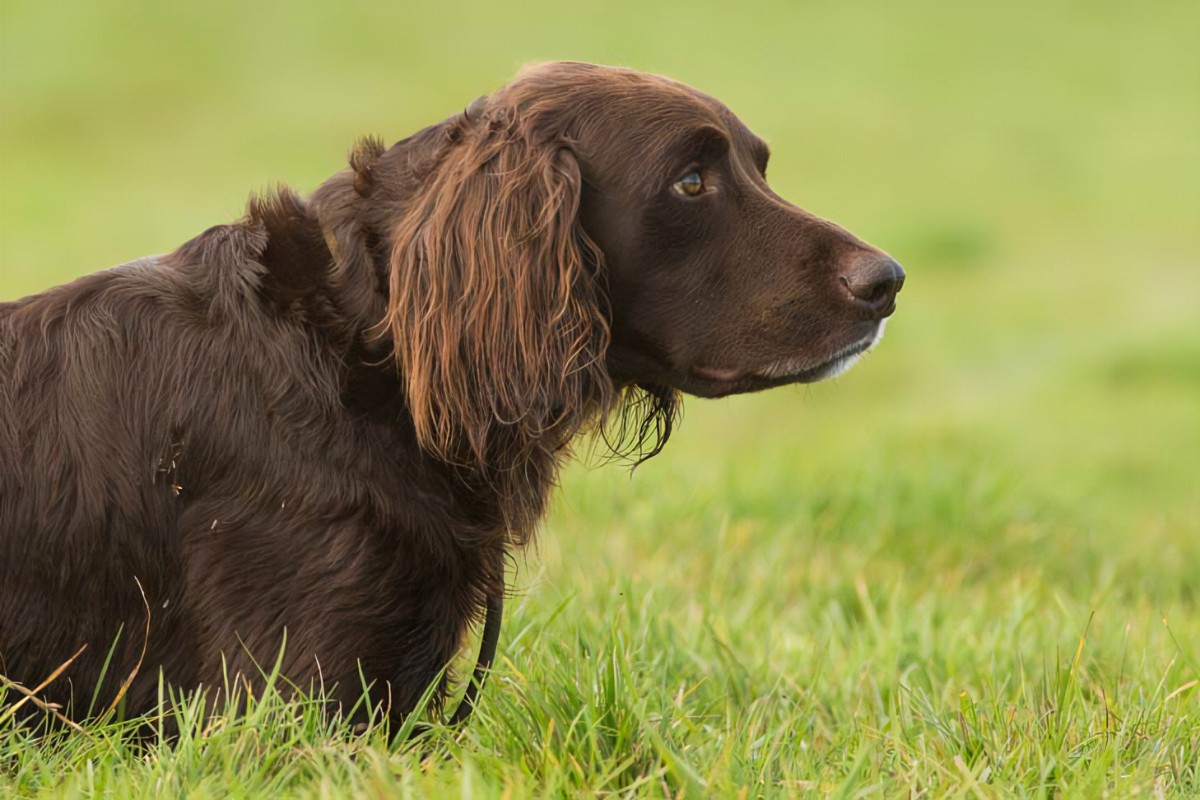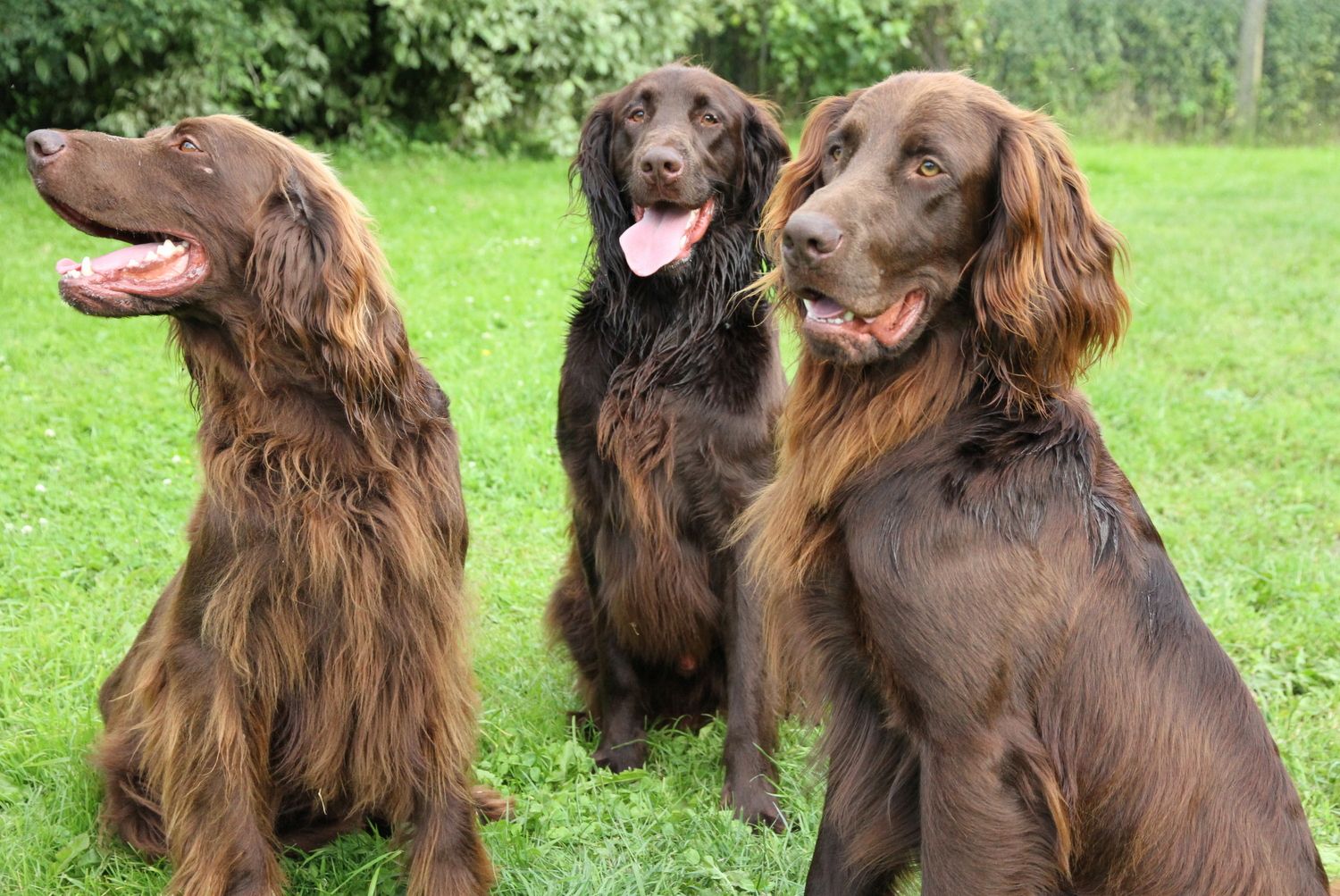German Longhaired Pointer: Elegant and Multifaceted German Gundog

History of the German Longhaired Pointer
The German Longhaired Pointer (Deutsch-Langhaar) is a versatile hunting breed developed in Germany in the 19th century, bred to be a noble, capable all-purpose gundog. Its ancestry includes German bird dogs, spaniels, setters, and pointers, selectively bred to work before and after the shot—pointing, flushing, retrieving, and tracking wounded game.
Unlike English pointers or setters bred solely for pointing, the German Longhaired Pointer was developed with a broader skill set, excelling in field, forest, and waterwork. The breed was standardized in 1879 with a focus on function, temperament, and appearance. It remains highly popular among hunters in Europe, especially in Germany, the Netherlands, and Austria, and is slowly gaining attention in North America.
Popularity of the German Longhaired Pointer
While still rare outside of Europe, the German Longhaired Pointer is prized by serious hunters and versatile dog enthusiasts. Its elegance, athleticism, and steady personality have earned it a reputation as an ideal working companion and family dog. Breed fanciers value its balanced drive, making it less frenetic than other pointing breeds, yet just as capable.
Physical Traits of the German Longhaired Pointer
This breed is known for its refined appearance, feathered coat, and graceful movement.
• Coat: Medium-length, dense, and slightly wavy with feathering on ears, legs, chest, and tail.
• Color:
o Solid liver, liver and white, or roan, often with patches or ticking.
• Size:
o Height: 23–28 inches (58–70 cm)
o Weight: 55–80 lbs (25–36 kg)
• Head & Expression: Elegant, slightly domed head with a long muzzle and soft, almond-shaped eyes.
• Ears: Long, flat, and well-feathered, hanging close to the cheeks.
• Tail: Feathered and carried level or slightly raised—balanced and expressive.
• Body: Strong and athletic with a deep chest, straight back, and long limbs, built for endurance and agility.
Behavioral Traits of the German Longhaired Pointer
The German Longhaired Pointer is steady, affectionate, and intelligent, bred for cooperative fieldwork and family harmony.
• Versatile Hunter: Equally adept at pointing, retrieving, and tracking—a true multipurpose gundog.
• Calm and Focused: More even-tempered than some pointer breeds—less frantic, more thoughtful.
• Affectionate and Devoted: Loyal and loving with family, often forming strong bonds with one or two people.
• Trainable and Eager to Work: Responsive to training, especially when gently guided with purpose.
• Gentle with Children and Other Pets: Naturally social and friendly when properly socialized.

Why Choose a German Longhaired Pointer?
This breed is ideal for hunters, outdoorsy families, or dog sport enthusiasts who want a dog that’s elegant, biddable, and reliable.
• Stunning Appearance: Sleek coat, feathered tail, and graceful movement make this breed visually striking.
• Balanced Energy: Ready to work but calm and collected indoors.
• Versatility in the Field: Combines stamina, nose, and cooperation across many hunting scenarios.
• Low Aggression, High Devotion: Friendly with people and animals, but deeply loyal.
• Intelligent and Problem-Solving: Enjoys learning, especially in structured settings like tracking or obedience trials.
Caring for Your German Longhaired Pointer
This breed thrives with regular activity, bonding time, and mental stimulation.
• Training:
o Intelligent and cooperative—positive reinforcement works well.
o Early socialization ensures a confident and well-mannered adult.
• Exercise:
o Needs 60–90 minutes of daily activity, ideally off-leash in safe areas or structured fieldwork.
o Enjoys hiking, swimming, scent work, and long walks.
• Grooming:
o Brush 2–3 times per week to manage feathering and prevent matting.
o Clean ears regularly to avoid infections.
• Nutrition:
o High-quality diet suited for active medium-to-large breeds—watch weight and support joints.
• Companionship:
o Doesn’t like being left alone for long—thrives in close-knit households.

Health Considerations
The German Longhaired Pointer is generally a healthy, long-lived breed, with a typical lifespan of 12–14 years. Health concerns may include:
• Hip and Elbow Dysplasia
• Ear Infections
• Progressive Retinal Atrophy (PRA)
• Bloat (gastric torsion)
• Allergies (in some lines)
Choose reputable breeders who perform health testing and emphasize longevity and structural soundness.
Comparisons to Other Pointer Breeds
Compared to the German Shorthaired Pointer, the GLP is calmer and more deliberate, with a longer coat and more elegant demeanor. It’s more sensitive and people-focused than the Weimaraner, and less intense than the English Pointer, making it a great choice for owners who want versatility without overwhelming drive.
Is the German Longhaired Pointer Right for You?
If you're seeking a graceful, intelligent, and steady hunting companion with a soft heart and beautiful presence, the German Longhaired Pointer might be your match. Ideal for those who want a dog that’s equally capable in the field and at home, it’s a rewarding partner for active and engaged owners.
However, it may not be ideal for urban settings or for those without time to provide adequate exercise and training.
Ready to Welcome a German Longhaired Pointer?
United Pet Club supports prospective owners with breeder connections, care advice, and training resources. Whether you're a hunter, nature lover, or dog sport competitor, the German Longhaired Pointer offers a blend of elegance, drive, and affection few breeds can match.
